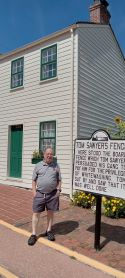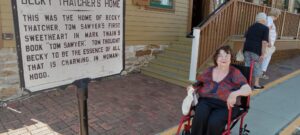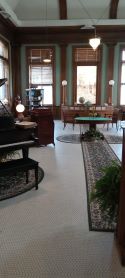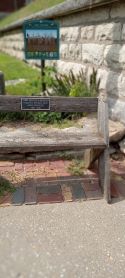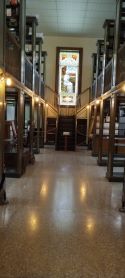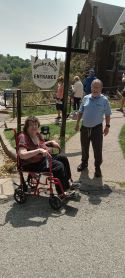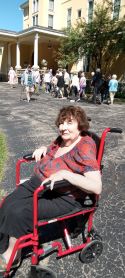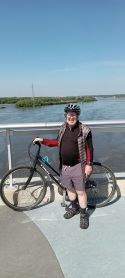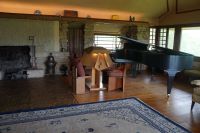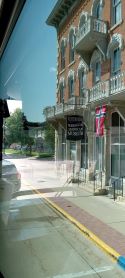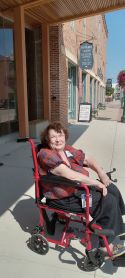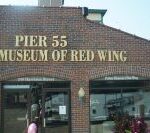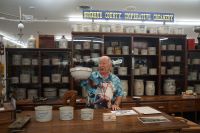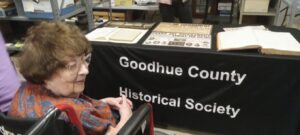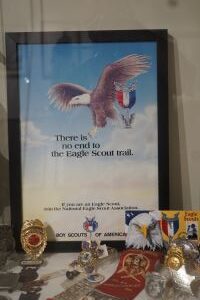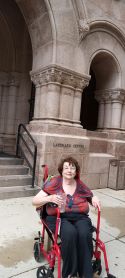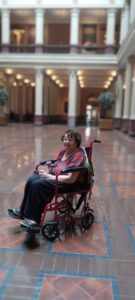August 25, 2024
Viking evicted us at Alton but continued the cruise on land for a few days to help adjust from cruise lag. For example. Breakfast included one juice rather than four, dinner was find your own restaurant, rather than venison, lobster. Or both. We do now have a pool and a nice gym. Both were absent from the Viking Mississippi.

 We dawdled in Elsah, North of Alton for a two-part tour. The first part was the town, started in the 1850s to provide the passing steamboats (average life of five years before sinking or explosion) and then quarried limestone. Owner Samples gave lots to purchasers of building materials and the 60 homes reflect those origins. The guide also pointed out a restore Sears house. It’s the yellow one. As you might imagine it’s cutesy town, with a few bed and breakfasts.
We dawdled in Elsah, North of Alton for a two-part tour. The first part was the town, started in the 1850s to provide the passing steamboats (average life of five years before sinking or explosion) and then quarried limestone. Owner Samples gave lots to purchasers of building materials and the 60 homes reflect those origins. The guide also pointed out a restore Sears house. It’s the yellow one. As you might imagine it’s cutesy town, with a few bed and breakfasts.
The second half was a tour of Principia, an interesting college perched on 
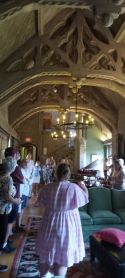 the bluffs it moved to around 1930 from St Louis and hired a California architect whose building style earned the campus a spot on the National Register. What is most unusual is that it is the only Christian Science College in the world. Covid reduced numbers from 1100 to 350. which seems to me a big financial problem. But the school must be heavily endowed. The 350 students, 49% international, claim $13 million in scholarships. They found mastodon bones on campus so there’s a class featuring archeological digs, and a division 1 championship in rugby. Who knew?
the bluffs it moved to around 1930 from St Louis and hired a California architect whose building style earned the campus a spot on the National Register. What is most unusual is that it is the only Christian Science College in the world. Covid reduced numbers from 1100 to 350. which seems to me a big financial problem. But the school must be heavily endowed. The 350 students, 49% international, claim $13 million in scholarships. They found mastodon bones on campus so there’s a class featuring archeological digs, and a division 1 championship in rugby. Who knew?
Today was an intro to St Louis, including a visit to the Arch, where I realized 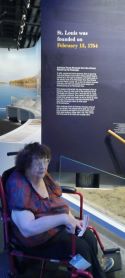
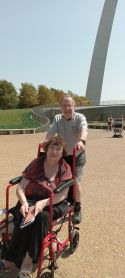 I’d never been. The museum had some nice information on St Louis’ authentication gateway to the west. The first exhibit was about the folding of the city. I had assumed the garrison at fort de Chartres surrender and crossed the Mississippi and founded St Louis. However, the fort was not handed over until 1765, but a French trading group stopped at the fort before establishing the new city.
I’d never been. The museum had some nice information on St Louis’ authentication gateway to the west. The first exhibit was about the folding of the city. I had assumed the garrison at fort de Chartres surrender and crossed the Mississippi and founded St Louis. However, the fort was not handed over until 1765, but a French trading group stopped at the fort before establishing the new city.
I think we may be almost cured of cruise lag, though nostalgia is starting to settle in…

